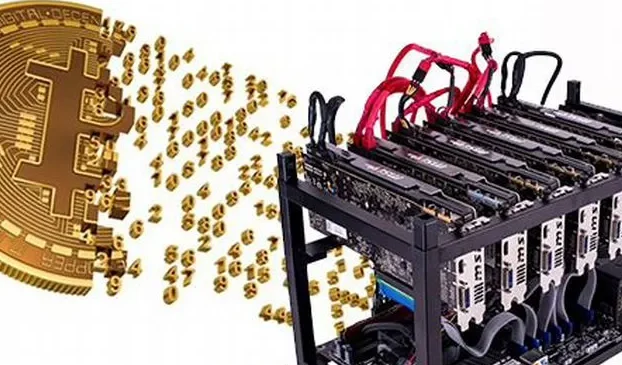Starting your journey into cryptocurrency mining can feel overwhelming, especially when choosing the right bitcoin mining equipment for beginners. With the rapidly evolving landscape of digital currencies and mining technology, new miners often struggle to understand which hardware will provide the best return on investment while remaining accessible to newcomers. Whether you’re looking to generate passive income or simply curious about the mining process, selecting appropriate bitcoin mining equipment for beginners requires careful consideration of factors like initial investment, electricity costs, mining difficulty, and long-term profitability. This comprehensive guide will walk you through everything you need to know about getting started with mining hardware, from understanding the basics to making your first purchase and setting up your mining operation.
What is Bitcoin Mining Equipment for Beginners?
Bitcoin mining involves using specialized computer hardware to solve complex mathematical problems that validate transactions on the Bitcoin network. For beginners, understanding the different types of mining equipment is crucial for making informed decisions about their investment.

Mining equipment has evolved significantly since Bitcoin’s early days. Initially, miners could use regular CPUs, then GPUs, but today’s mining landscape is dominated by Application-Specific Integrated Circuits (ASICs). These devices are specifically designed for Bitcoin mining and offer the best combination of efficiency and profitability for newcomers to the space. The key to success lies in choosing equipment that balances initial cost, power consumption, hash rate, and ease of use. Beginners should focus on reliable, well-supported devices from reputable manufacturers rather than chasing the absolute highest performance machines.
Essential Types of Mining Hardware for New Miners
ASIC Miners: The Gold Standard
ASIC miners represent the most practical choice for bitcoin mining equipment for beginners. These devices are plug-and-play solutions that require minimal technical knowledge to operate. Popular beginner-friendly models include the Antminer S19, Whatsminer M30S, and AvalonMiner series.
Modern ASIC miners offer hash rates ranging from 50 TH/s to over 100 TH/s, with power consumption typically between 2,000-3,500 watts. While the initial investment ranges from $2,000 to $8,000, these devices provide the best chance of profitable mining for newcomers.
GPU Mining Rigs: Alternative Options
While less efficient for Bitcoin mining specifically, GPU rigs offer versatility for mining alternative cryptocurrencies. Graphics card-based systems allow beginners to learn mining concepts while maintaining the flexibility to switch between different coins based on profitability.
Building a GPU rig requires more technical knowledge but provides valuable learning experiences about mining operations, cooling, and system optimization.
How to Choose Your First Mining Setup
Budget Considerations
Determining your budget is the first step in selecting bitcoin mining equipment for beginners. Consider not just the hardware cost but also ongoing expenses like electricity, cooling, and maintenance. A realistic starting budget ranges from $3,000 to $10,000 for a serious mining operation. Calculate your electricity costs carefully, as this represents the largest ongoing expense. Mining equipment typically consumes significant power, and your local electricity rates will directly impact profitability.
Space and Infrastructure Requirements
Mining equipment generates substantial heat and noise, requiring appropriate space and ventilation. Beginners should ensure they have adequate electrical capacity, proper ventilation, and consider noise levels if mining at home. Professional mining often requires dedicated spaces with industrial electrical connections and cooling systems, but smaller home operations can start with garage or basement setups.
Best Bitcoin Mining Equipment for Beginners in 2025
Top Recommended ASIC Miners
Antminer S19j Pro (100 TH/s) This model offers excellent efficiency and reliability for newcomers. With a hash rate of 100 TH/s and power consumption of 3,050W, it provides a good balance of performance and accessibility.
Whatsminer M30S+ (100 TH/s) Known for durability and consistent performance, this miner offers competitive efficiency ratings and reliable operation for beginner miners.
AvalonMiner 1246 (90 TH/s) A more budget-friendly option that still provides solid performance, making it ideal for those testing the waters of Bitcoin mining.
Supporting Equipment and Accessories
Beyond the main mining hardware, beginners need power supplies, networking equipment, monitoring software, and proper cooling solutions. Quality power supplies are crucial for stable operation and should be sized appropriately for your chosen mining equipment. Consider investing in uninterruptible power supplies (UPS) to protect your equipment from power fluctuations and outages.
Setting Up Your Mining Operation
Installation and Configuration
Most modern bitcoin mining equipment for beginners comes with user-friendly setup processes. Connection typically involves plugging in power, connecting to your network, and configuring mining pool settings through a web interface. Choose reputable mining pools that offer good documentation and support for beginners. Popular options include F2Pool, Poolin, and Slush Pool, each offering different fee structures and payout methods.
Monitoring and Maintenance
Regular monitoring ensures optimal performance and helps identify issues before they become costly problems. Most mining equipment includes built-in monitoring tools, but third-party solutions offer more comprehensive tracking and alerting capabilities. Establish regular maintenance schedules for cleaning fans, checking connections, and updating firmware to maximize equipment lifespan and performance.
Understanding Mining Profitability
Calculating Returns
Profitability depends on multiple factors including hash rate, power consumption, electricity costs, mining difficulty, and Bitcoin price. Use online calculators to estimate potential returns, but remember that cryptocurrency markets are volatile. Consider both daily profits and long-term projections when evaluating bitcoin mining equipment for beginners. Factor in equipment depreciation and potential changes in mining difficulty.
Managing Risks
Mining involves significant risks including equipment failure, cryptocurrency price volatility, and changing network conditions. Diversification and conservative projections help manage these risks effectively. Consider starting with a smaller investment to gain experience before scaling up your mining operation.
Common Mistakes to Avoid
Overestimating Profits
Many beginners make overly optimistic profit projections without accounting for all costs and variables. Always use conservative estimates and factor in unexpected expenses.
Inadequate Planning
Rushing into mining without proper planning for space, electricity, and cooling often leads to poor performance and additional costs. Take time to plan your setup thoroughly.
Ignoring Electricity Costs
Electricity represents the largest ongoing expense in mining operations. Failing to accurately calculate these costs can turn profitable operations into money-losing ventures.
Advanced Tips for Optimization
Improving Efficiency
Optimize your mining setup through proper ventilation, regular maintenance, and firmware updates. Small improvements in efficiency compound over time to significantly impact profitability.

Scaling Your Operation
As you gain experience, consider expanding your mining operation strategically. Focus on improving efficiency and reducing costs per unit rather than simply adding more equipment.
Conclusion
Starting your mining journey with the right bitcoin mining equipment for beginners sets the foundation for a successful and profitable operation. Focus on reliable, efficient hardware from reputable manufacturers, carefully calculate all costs including electricity, and maintain realistic profit expectations. Remember that successful mining requires ongoing learning and adaptation as technology and market conditions evolve. Start with a conservative approach, gain experience, and gradually scale your operation as you become more comfortable with the process.










